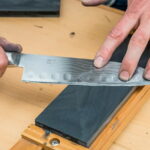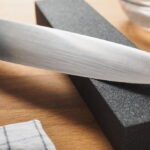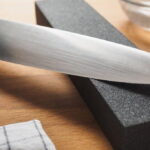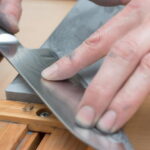Any pro chef knows that a sharp knife is an essential tool in an optimised commercial kitchen. Dull knives not only make food preparation a frustrating experience, but they’re also dangerous to use. This is where sharpening stones come in. These tools are vital for maintaining the sharpness of your knives and keeping them in top condition. Read on to explore the different types available and what you need to know about each one to help you find the perfect tool for your needs!
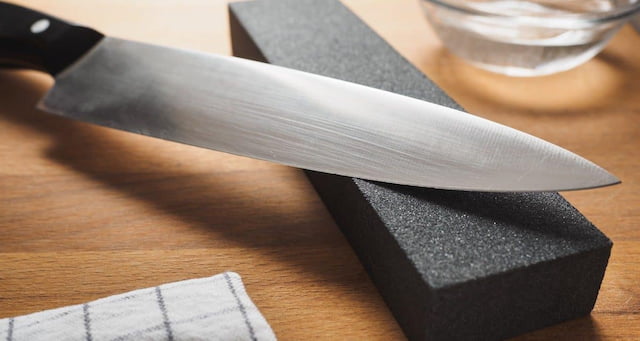
Reputable Brands
When you choose a renowned brand, you can be confident that the stones are of high quality and will perform as expected. Go for high-quality Japanese whetstones from reputable brands, such as Naniwa and Kaiden, and give your knives a keen edge! These tools are known for their quality and consistency in terms of grit size and texture. They’re also prized for their ability to produce a razor-sharp edge on knives without damaging the blade.
The best part? They’re suitable for all types of knives, from kitchen knives to outdoor and hunting knives. In a commercial kitchen, time is a crucial factor, so you want to choose a sharpening stone that will be effective and efficient. Well-known brands invest in research and development to ensure that their tools are optimised for performance, which means you can sharpen your knives quickly.
Another advantage of choosing a reputable brand is that you’ll have access to customer support if you need it. If you have any questions or concerns about your tools, the brand will have a team of experts on hand to help you out. This is particularly important in a commercial kitchen, where time is of the essence, and you can’t afford to waste time troubleshooting problems.
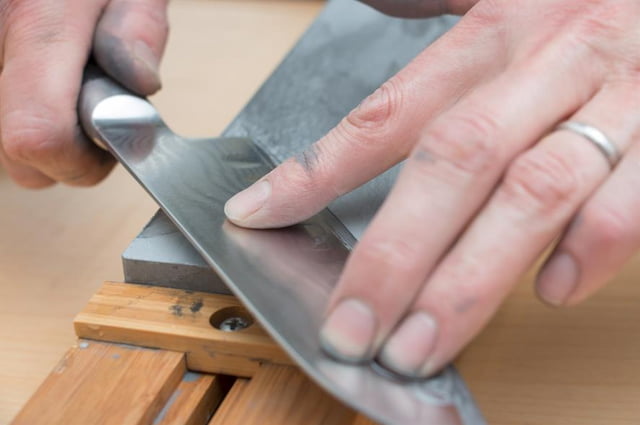
Grit Sizes
The Japanese whetstones come in a variety of grit sizes, which refer to the coarseness or fineness of the abrasive particles on the stone’s surface. In general, the higher the grit number, the finer the abrasive particles and the smoother the finish on your knife. Here’s a breakdown of the most common grit sizes for these tools:
- Coarse grit (less than 1000 grit): This type is used for repairing chips or nicks in a blade, reshaping the edge, or for removing rust or other heavy damage. They’re the roughest stones and remove a significant amount of metal;
- Medium grit (1000 to 3000 grit): This type is used for general sharpening, to refine an edge that’s still fairly sharp, but not razor sharp. It’s also good for removing small nicks or scratches;
- Fine grit (4000 to 8000 grit): This is used for honing and refining the edge, giving it a smooth finish and razor sharpness. They remove very little metal and are used to polish the edge;
- Extra fine grit (over 8000 grit): These are used for ultra-fine sharpening and polishing. They put a mirror-like finish on your knife edge.
It’s important to note that the grit size you choose depends on the condition of your knife, your sharpening goals, and your personal preference. For example, if you have a dull blade, you should start with a coarse grit whetstone to reshape the edge before moving to one with a medium or fine grit to refine it. If you’re looking to maintain an already-sharp edge, a tool with fine or extra-fine grit might be what you need.
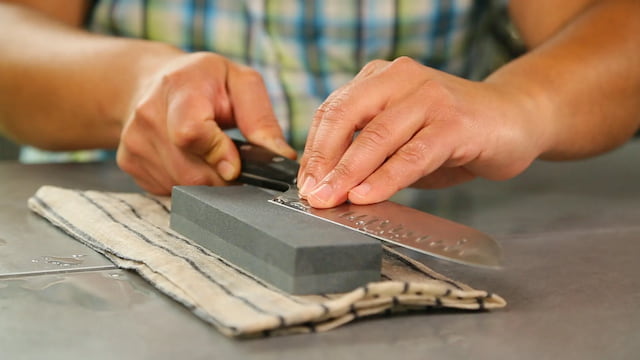
Materials
There are three main materials for these tools: natural, ceramic, and diamond. Here’s a brief rundown of each:
- Natural sharpening stones: These are quarried from natural sources, typically in Japan or Arkansas. They’re made of materials such as novaculite, fine-grained quartz, or slate, which are known for their hardness and ability to sharpen knives. These tools are known for producing a fine edge with a smooth finish. However, they can be quite expensive and require regular maintenance to keep them flat;
- Ceramic sharpening stones: These are made of ceramic that’s been moulded and fired to create an abrasive surface. They’re known for their durability and ability to maintain a consistent grit size over time. They’re often used for honing and polishing and are a good choice for maintaining a sharp edge. Ceramic stones are also more affordable than natural ones, making them a good option for home use;
- Diamond sharpening stones: These are made of metal plates coated with diamond particles. They’re known for their fast-cutting speed and ability to remove material quickly. These tools are a good choice for repairing and reshaping damaged blades, but they don’t produce as fine a finish as natural or ceramic stones. They’re also very durable and require little maintenance.
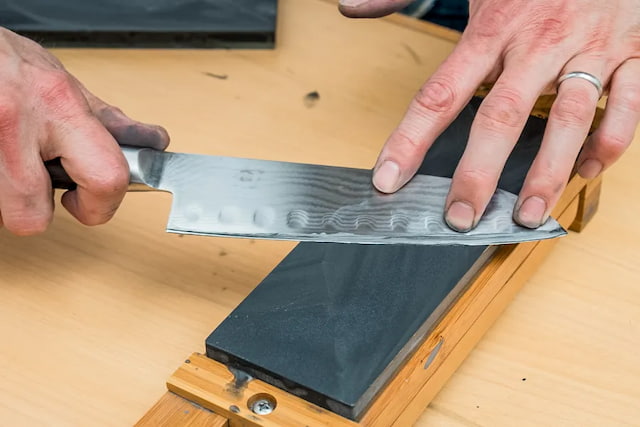
What is the Best Material for a Whetstone?
The type of material you choose will depend on your needs and personal preferences. Natural materials are a great choice for those who are looking for the highest quality finish, but they require a bit more investment and maintenance.
Ceramic ones are a good all-around choice that offers a good balance of durability, affordability, and performance. Diamond stones are ideal for those who need to quickly repair or reshape damaged blades but may not be the best choice for everyday sharpening needs.
Selecting the right tool for your specific needs is key to keeping your knives sharp and in top condition. Now that you have the right knowledge, you can make an informed decision and buy stones for sharpening that fit your kitchen’s needs!

